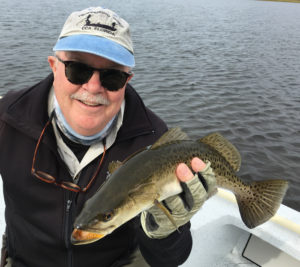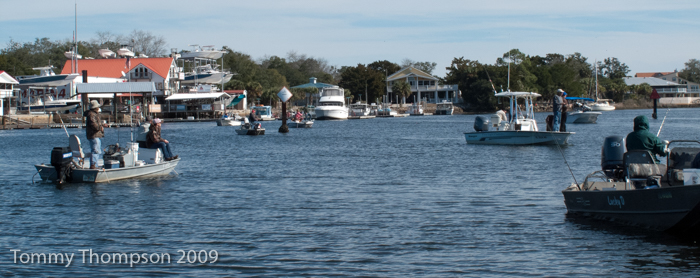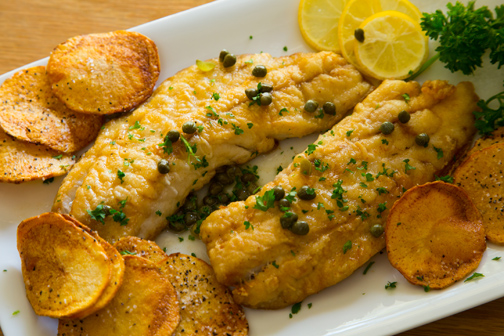Spotted Seatrout–A Big Bend Favorite (To Catch and To Eat)!
Fall is here and all those undersized spotted seatrout that Big Bend anglers have been catching and releasing since last spring have grown up. Now, they’re mostly all in the 15 to 20-inch slot (you can keep one over 20-inches) and there should be no problem catching dinner as the waters on the Big Bend cool.
For for some reason the Big Bend saw a decided decline in that fishery this past year. At first, trout were scarce from Tampa Bay to Apalachicola, and then they started to bite. However, anglers catching a hundred a day only caught three or four keepers. Some fishermen blamed the weather, red tide and some even said that big smoothback pufferfish ate the juvenile trout stock after coming ashore from deep water. But all those 14-1/4 inch seatrout stayed around through the summer and many have grown up and are now over the 15-inch minimum. In fact, in the weeks after Hurricane Hermine, catches of slot-sized trout were the rule, rather than the exception.
If you believe in sources like the Old Farmer’s Almanac, we’re going to have a cold winter. After all, they’ve been in business since 1792 so they should know! But no matter the intensity of the season, we’ll have some cold weather and that’s going to move those keeper seatrout off the Big Bend grass flats and into deep river holes and channels.
When the Gulf waters cool to about the 65-degree range, seatrout sense the coming of winter and start looking for places where they can stay protected from what may later be water in the 40’s. That should happen in early to mid-December and if you’ve never experienced the “circus” that’s the wintertime trout fishing experience, put it on your bucket list.
On of the first locations that produce wintertime seatrout is the Steinhatchee River. At the first sign of chilly weather, point your boat west towards the Gulf and the channel near marker #26. If it’s cold and overcast, trout will be in the deep channel. If it’s cold and sunny, they’ll move to the dark muddy channel edges on both sides of the river. In either case, it’s all about keeping their cold-blooded bodies warm. As it gets colder (I’ve had ice on my boat’s deck in December!), the trout head upriver.
Cold weather trout often make their first stop at the deep Suicide Hole, where seatrout go to commit suicide in the winter. It’s just downstream from the Jena boat ramp and the Sea Hag Marina.
Another spot is the Croaker Hole, past the bridge and under the power lines.
Near the town of Suwannee, productive trout haunts are in Dan May and Barnett Creeks, south of the river’s East Pass. Barnett Creek is fairly shallow, but it’s dark bottom warms quickly on cold sunny days, attracting lots of trout. Dan May Creek is also shallow, but there’s a deep hole in front of the Dan May Lodge that holds fish on really frigid days. And don’t forget the deep stretch of the main river between the Gateway Marina (formerly Miller’s) canal and the Salt Creek Cutoff.
In addition to these top trout hotspots, there are others, sometimes more unpredictable and more dependent on human influences. The Horseshoe Beach channel between the spoil banks can be good, as can Pat’s Elbow in the Withlacoochee River at Yankeetown. And if the power plant discharges at Crystal River and St. Marks are pumping warm water, be sure to give them a try.
Now, a word or two about tackle and baits. Remember that these trout are not huge and that light spinning gear in the 2500 or 3000 class is adequate. Using 8 to 10-pound braided line will help you better feel the soft wintertime bite and ensure more hookups. And while live shrimp work, stick with artificial baits like Berkley Gulp!, D.O.A.’s new 2-1/2-inch shrimp, MirrOlure TTs (TT means “tiny trout”— A favorite prey of bigger trout!), Paul Brown Devils or Slick soft plastics. Don’t put your bait under a cork unless you’re on a shallower muddy channel edge and can rig it just off the bottom. The best technique is to cast it upstream and retrieve it very slowly near the bottom, taking care not to snag it. But be prepared to lose a few lures to the bottom.
Trout Piccata–a tasty twist on fried seatrout! (Click For Recipe!)
Finally, etiquette. Wintertime trout holes are often referred to as “circuses” due to the fact that lots of boats and anglers occupy relatively small spaces. On busy weekend days, you’ll likely be able to speak in soft tones to your neighbor and lines often get tangled. Be polite, be agreeable, be apologetic if necessary, and most of all—just have fun!




